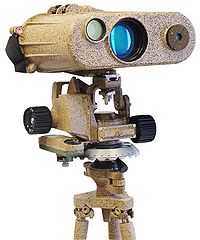
Photo from wikipedia
Laser bioprinting is a term that refers to a group of laser-based techniques for printing living cells with high precision and good viability. Most of these techniques are based on… Click to show full abstract
Laser bioprinting is a term that refers to a group of laser-based techniques for printing living cells with high precision and good viability. Most of these techniques are based on modifications of the standard Laser Induced Forward Transfer Technique (LIFT). When it comes to printing living material, direct laser irradiation should be avoided, therefore an indirect LIFT technique comprising an energy absorption layer should be used. This work presents a blister actuated LIFT (BA-LIFT) technique which uses a commercial polyimide tape as a uniform energy absorption layer. To increase the potential of the technique for cell selection and printing accuracy, we take advantage of the high optical transmission of the polyimide layer to implement an in-line fluorescence and conventional imaging vision system coaxial with the laser path. With this system and using the appropriate staining methodology it is possible to track and identify different cell types, selecting those to be transferred and tracking cell survival both in the donor and acceptor substrates. We studied the BA-LIFT printability map for sodium alginate and methylcellulose hydrogels in the fluence range from 6.1 J/cm2 to 2.0 J/cm2 together with the cell viability assessment measured by our fluorescence system. The study has revealed that less concentrated, therefore less viscose hydrogel shows better results with lower fluences, whereas hydrogels with higher concentrations present better results at higher fluences. Also, at low fluences 98 % of cell viability was obtained, besides both primary cells and cell lines keep their integrity, proliferating and functional activity. The technique was tested by tracking and targeting mouse hematopoietic progenitor stem cells transferred to assess colony forming units; moreover, natural killer cells were isolated and its activation in a stimulation media was tracked with the fluorescence system.
Journal Title: Biofabrication
Year Published: 2019
Link to full text (if available)
Share on Social Media: Sign Up to like & get
recommendations!